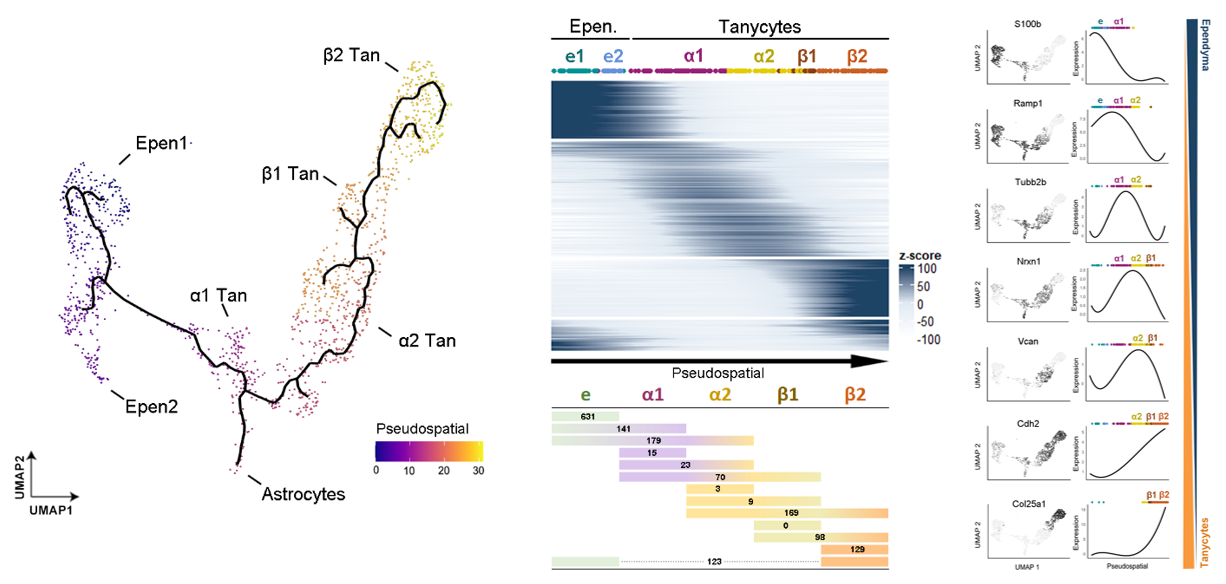Summary.
The ependyma lining the third ventricle (3V) in the mediobasal hypothalamus is nowadays recognized as a critical player in controlling energy
balance and glucose homeostasis. Composed of molecularly distinct cell types, including diverse tanycyte subpopulations and typical ependymal
cells, defining their gene expression profile and dynamics could uncover potential pathways involved in metabolic regulation.
Here, we catalog ependymal cell types using FACS-associated single-cell RNA sequencing in different metabolic conditions. By profiling gene
expression in 13 121 individual cells from fed, 12h-fasted, and 24h-fasted adult male mice, we identified novel markers and functions for
ependymal cell subpopulations along the 3V. Regarding tanycytes, specific inferred interactions with neurons were confirmed using electron
microscopy and immunohistochemistry. Additionally, fasting at 12h and 24h dynamically modulates gene expression leading to a cellular metabolic
switch and increasing tanycyte subgroup heterogeneity, calling into question their current classification. Thus, we propose to reclassify the
ependymal cells based on dynamic gradients calculated through pseudospatial analyses along the 3V.
Altogether, this data provides a mechanism through which energy status leads to distinct cell type-specific responses in the 3V and gives new
insights into molecular diversity underlying tanycyte classification.
Related publication
Brunner M*, Lopez-Rodriguez D*, Estrada-Meza J, Dali J, Rohrbach A, Deglise T, Messina A, Thorens B, Santoni F, Langlet F. Fasting induces a metabolic switch and a spatial redistribution of tanycyte functions on lipid processing and neuronal interactions. Nature Communications. Volume 15, article number 6604, (2024)
→ *Co-first authorship
Project was held at the laboratory of Prof. Fanny Langlet
(Department of Biomedical Sciences, University of Lausanne, Switzerland).

